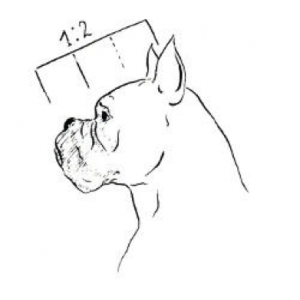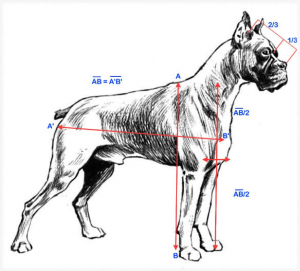The boxer belongs to the medium-sized breeds; it is a smooth-haired, robust dog with a square physique and strong limbs. The boxer is a dog that can best be compared to a strongly muscled athlete, who combines a high degree of strength and speed. The musculature is very dry and strongly developed and must be clearly visible. The movements of the boxer are lively, the gait is firm yet elastic, free and spacious in gait and the posture is proud and noble. As a working dog, he should not lack a certain mass, coupled with strength, as well as elegance as a companion dog with a lot of endurance and an exceptionally good jumper.
All these collective requirements can be united in one body only when each member is individually built for the highest achievement and joined together into a harmonious whole. That is why the boxer should not be plump or heavy with a maximally developed powerful body. The head gives the boxer the character so characteristic; it must be in good proportion to the rest of the body and above all not too light.
The most characteristic of the boxer is the muzzle, where the correct shape and the correct proportion to the size of the skull is most important. When assessing the boxer, one must therefore first consider the overall picture, whether mass and elegance on the one hand and whether the different parts of the body on the other hand are in the most desirable proportion to each other, while also paying attention to the correct color. Only then should these distinct parts be tested for their correct construction and function.




